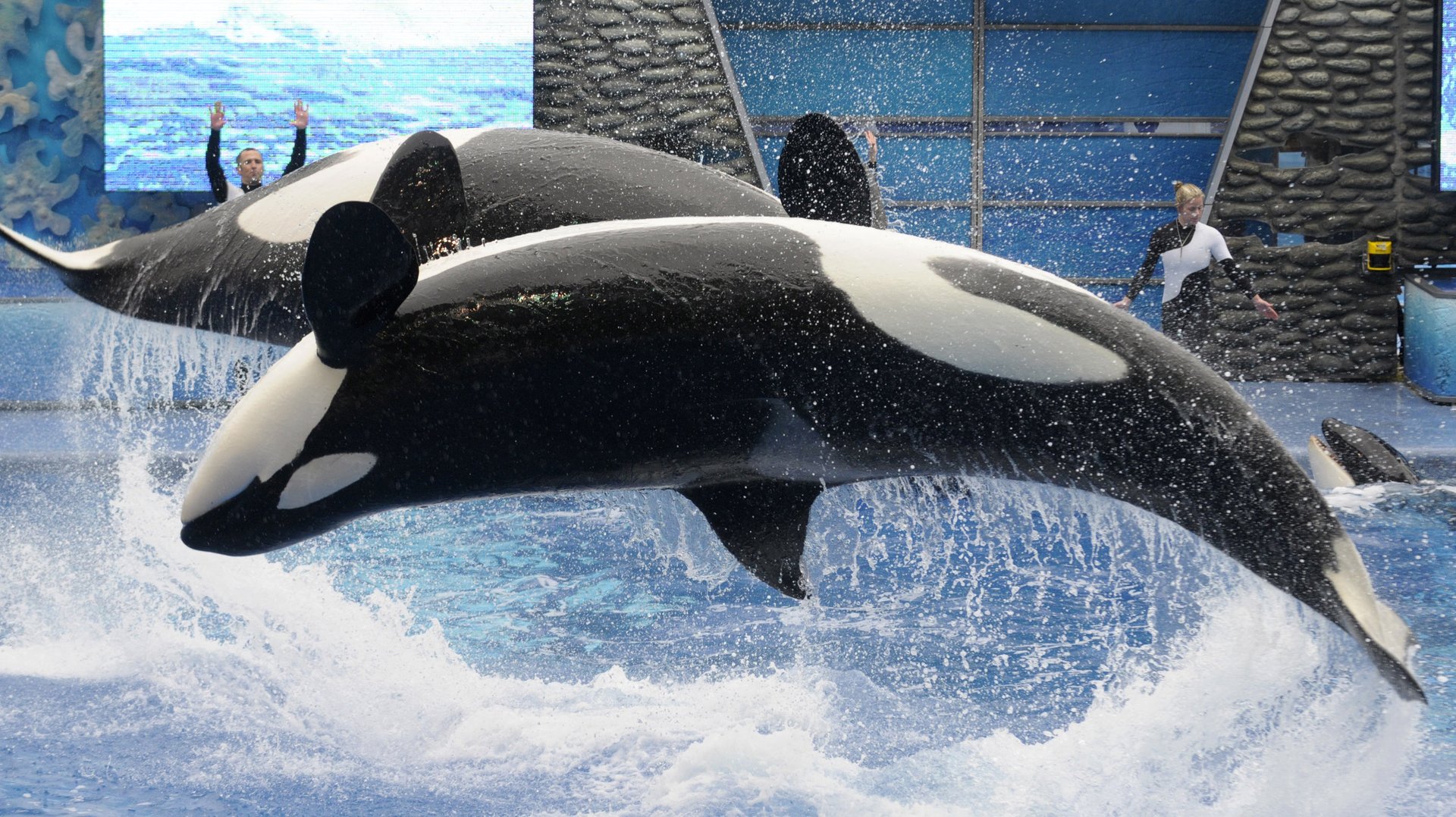Blackstone is taking SeaWorld and its 28 killer whales public
Private equity giant Blackstone Group filed today for an initial public offering of SeaWorld Entertainment, the chain of aquatic theme parks that, in its heyday, captivated American audiences with humans riding on the backs of whales like marine cowboys.


Private equity giant Blackstone Group filed today for an initial public offering of SeaWorld Entertainment, the chain of aquatic theme parks that, in its heyday, captivated American audiences with humans riding on the backs of whales like marine cowboys.
But while its revenue is growing modestly, SeaWorld is suffering from an aging brand—the first one opened in 1964 amid a Disneyland-inspired theme park boom—and growing concern over the safety of its workers, animals, and customers. Blackstone, which said it would use cash from the IPO to pay off debt, may be unloading SeaWorld on the public while it still can.
SeaWorld has been under intense pressure since 2010, when a killer whale at its Orlando theme park devoured a trainer in front of horrified visitors there for a “Dine With Shamu” event (Shamu being SeaWorld’s stage name for all its killer whales). The same whale—known as Tilikum or Tilly, for short— killed another trainer in 1991 and a homeless man in 1999. But Tilly is also SeaWorld’s most fecund orca, siring at least 13 whale calves for the company.
The breeding program is key to keeping costs down at SeaWorld, which had expenses last year of $1.2 billion and revenue of $1.3 billion. It was the first zoo to successfully breed a killer whale and currently has 28 of the animals under its care, according to the IPO prospectus Blackstone filed with the US Securities and Exchange Commission. Killer whales, or Orcinus orca, are the main attraction at the SeaWorld parks, which typically charge extra for special shows with them.
However, safety concerns have forced SeaWorld to scale back the flashy, whale-human duets that were once its hallmark. In June, a federal judge upheld regulations imposed by the Occupational Safety and Health Administration (OSHA) that, among other restrictions, ban employees from riding the whales. SeaWorld continues to fight with OSHA, which just last week issued a press release accusing the company of avoiding safety inspections related to the 2010 attack.
SeaWorld representatives didn’t return messages seeking comment, but they have defended their record in the past. A book published this year, Death at SeaWorld, by David Kirby, featured former SeaWorld trainers criticizing the company’s treatment of animals and handling of employee safety. SeaWorld said in a statement: “We disagree with Kirby’s positions on marine mammal display and hope that he, unlike others who engage in the debate over these issues, confines his arguments to matters of fact.”
The company’s IPO prospectus lists safety concerns as a “risk factor” for investors, acknowledging that “injuries or death, while rare, have occurred in the past and may occur in the future,” but the filing doesn’t go into specifics. Earlier this month, a girl from Georgia said she was bitten by a dolphin at SeaWorld in Orlando.
SeaWorld has enjoyed unusual corporate parentage for much of its history. The company was owned by Harcourt Brace Jovanovich, the book publisher, from 1976 to 1989, when it was bought by the entertainment arm of beer maker Anheuser-Busch. (SeaWorld’s current portfolio of 11 theme parks includes two Busch Gardens in Tampa, Florida, and Williamsburg, Virginia.) Blackstone, the investment firm perhaps best known for its stake in Hilton Hotels, acquired Busch Entertainment in 2009 after Anheuser-Busch merged with InBev and shed its non-alcohol properties.
In its IPO filing, Blackstone said it would raise $100 million in taking SeaWorld public under the ticker symbol SEAS, though Bloomberg reports that could rise to “at least $500 million.” It disclosed that SeaWorld makes most of its revenue from ticket sales ($36.04 per customer in the first nine months of 2012) and in-park spending on food and merchandise ($22.49 per customer). Both of those figures rose this year thanks to higher pricing and slightly higher attendance.